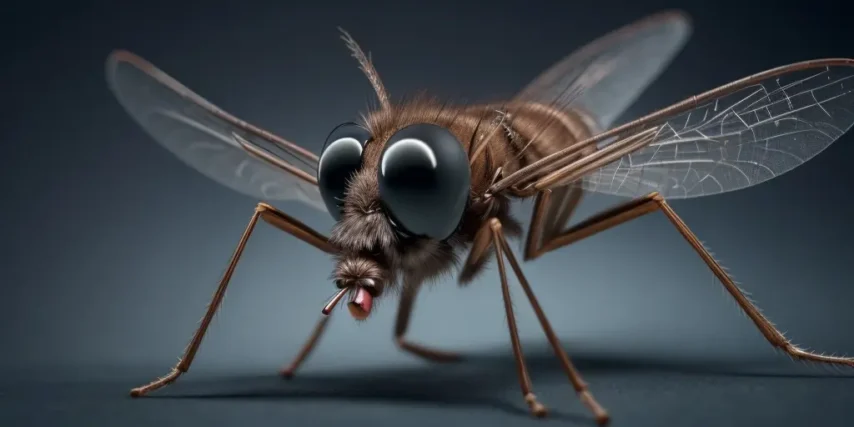The Itch Factor: Unveiling the Science Behind Mosquito Bites and Inflammation
Mosquitoes, the tiny, buzzing insects that seem to be ubiquitous during warmer months, are not just a nuisance but also carriers of various diseases. Beyond the immediate annoyance of their bites, many people experience a more prolonged and uncomfortable consequence: inflammation. In this article, we will delve into the intricate world of mosquito bites, exploring why they cause inflammation and the fascinating biological processes behind this irritating phenomenon.
Understanding the Basics of Mosquito Bites
Before we delve into the inflammation process, it’s essential to understand how mosquitoes operate. Only female mosquitoes feed on blood, seeking essential proteins to develop their eggs. When a mosquito bites, it uses specialized mouthparts to pierce the skin and access blood vessels. In the process, it injects saliva containing an array of bioactive compounds into the host.

Saliva’s Role in Triggering Inflammation
Mosquito saliva is a complex cocktail of proteins, enzymes, and other molecules. One key component is an anticoagulant that prevents blood clotting, allowing the mosquito to feed more efficiently. However, it is the other components of mosquito saliva that play a crucial role in initiating the inflammatory response.
Histamines: Culprits of Itchiness
Histamines are among the most notorious components found in mosquito saliva. Upon entering the bloodstream, histamines trigger an immune response, leading to the dilation of blood vessels and increased permeability of blood vessel walls. This vascular response is a hallmark of inflammation, resulting in the classic symptoms of redness, swelling, and heat associated with mosquito bites.
In addition to promoting blood flow to the bite site, histamines also stimulate sensory nerve endings, leading to the sensation of itchiness. This dual action on blood vessels and nerve endings is what makes mosquito bites so irritating.
Proteins and Enzymes: Setting the Stage for Inflammation
Mosquito saliva also contains various proteins and enzymes that can elicit immune responses. Some of these components can directly activate immune cells, such as macrophages and neutrophils, leading to the release of inflammatory molecules like cytokines and chemokines. These signaling molecules recruit more immune cells to the bite site, amplifying the inflammatory response.
Interestingly, some mosquito saliva proteins have evolved to counteract the host’s immune defenses. For example, certain proteins can inhibit blood clotting and suppress the host’s immune response, allowing the mosquito to feed for a more extended period without detection.

Immune Cells and Inflammation
Once the mosquito saliva components activate the immune system, immune cells rush to the bite site to defend the body against perceived threats. Neutrophils, a type of white blood cell, are among the first responders, targeting foreign substances and releasing enzymes to break them down.
As immune cells work to neutralize the foreign elements introduced by mosquito saliva, the surrounding tissue becomes a battleground for biochemical warfare. The release of cytokines and chemokines further attracts immune cells to the area, resulting in the characteristic swelling and redness associated with inflammation.
The Adaptive Immune Response
In some cases, repeated exposure to mosquito bites can lead to an adaptive immune response. This occurs when the body recognizes specific components of mosquito saliva as foreign and develops antibodies to combat them. While this process takes time to develop, it can provide a degree of immunity against future mosquito bites, reducing the severity of the inflammatory response.
Tips for Alleviating Mosquito Bite Inflammation

Understanding the science behind mosquito bite inflammation can help in developing effective strategies for alleviating the discomfort associated with bites. Here are some practical tips:
- Topical Treatments: Applying anti-inflammatory creams or ointments containing ingredients like hydrocortisone can help reduce inflammation and itchiness.
- Cold Compress: Applying a cold compress to the affected area can constrict blood vessels, reducing swelling and numbing the area to alleviate itching.
- Antihistamines: Over-the-counter antihistamines can be effective in blocking the histamine response, providing relief from itching and inflammation.
- Avoid Scratching: While it may be tempting, scratching mosquito bites can exacerbate inflammation and increase the risk of infection. Instead, try patting or tapping the area gently.
Conclusion
Mosquito bites are not just a minor inconvenience; they represent a complex interplay between mosquito saliva and the human immune system. The inflammatory response triggered by mosquito bites is a natural defense mechanism, but understanding the science behind it allows us to develop strategies to minimize discomfort. By exploring the intricate processes at play, we gain a deeper appreciation for the challenges our bodies face when dealing with these tiny, buzzing adversaries. As we navigate the warmer months, armed with this knowledge, we can better protect ourselves and find relief from the itch factor that accompanies mosquito encounters.







